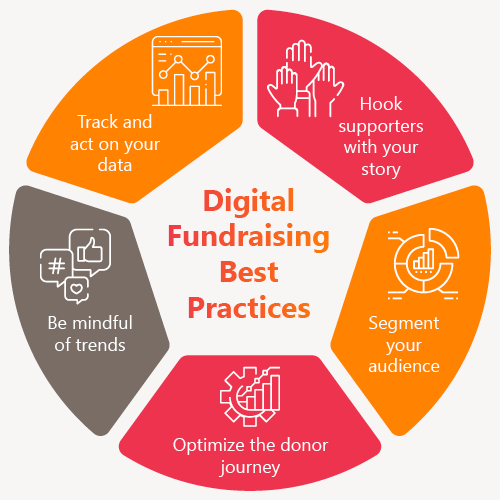Leading Nonprofit Fundraising Ideas: Cutting-edge Approaches to Increase More Funds
Leading Nonprofit Fundraising Ideas: Cutting-edge Approaches to Increase More Funds
Blog Article
The Role of Area Engagement in Nonprofit Fundraising: Structure Lasting Relationships for Lasting Support
Neighborhood involvement is progressively identified as an important component of successful nonprofit fundraising. The techniques and techniques used to engage areas vary extensively, elevating essential questions about efficiency and effect.
Comprehending Neighborhood Involvement
Community engagement is a crucial component of successful nonprofit fundraising efforts. It describes the techniques and activities that organizations employ to get in touch with their regional communities, cultivating relationships that are mutually beneficial. Comprehending neighborhood engagement entails recognizing its multifaceted nature, that includes engagement, outreach, and collaboration. Nonprofits have to determine crucial stakeholders-- such as neighborhood participants, local services, and various other organizations-- to produce efficient involvement strategies.
Efficient area engagement is asserted on energetic listening and responsiveness to the needs and interests of the area. This process entails soliciting responses, understanding neighborhood characteristics, and making certain that the company's goal aligns with neighborhood top priorities. Involving the community can take different forms, including public conferences, volunteer opportunities, and collaboration efforts, each created to encourage involvement and financial investment in the company's goals.
In addition, community interaction ought to be approached as a continuous discussion rather than a single initiative. By cultivating a comprehensive atmosphere where area voices are listened to and valued, nonprofits can build a solid structure for future fundraising undertakings. Ultimately, a deep understanding of neighborhood involvement equips organizations to develop genuine connections that improve their general efficiency and sustainability.
Benefits of Solid Relationships
Solid connections created with neighborhood involvement yield various advantages for not-for-profit fundraising efforts. First and primary, these partnerships foster count on and integrity, important elements in encouraging contributors to add. When potential supporters see a nonprofit actively entailed in their area, they are more probable to rely on its mission and influence.

In addition, these relationships assist in reliable communication. Nonprofits can utilize their links to share tales of impact, updates, and needs, making sure that fans stay informed and engaged. This open line of interaction not just enhances bonds but likewise encourages referral promotion, expanding the nonprofit's reach.
Last but not least, strong area ties can draw in brand-new companions and enrollers. Companies and people are more likely to align with organizations that show purposeful community participation, providing extra sources and support that can considerably improve fundraising capacities. Thus, cultivating durable connections with area involvement is indispensable to a not-for-profit's long-lasting fundraising success.
Techniques for Reliable Involvement
How can nonprofits efficiently involve their communities to enhance fundraising efforts? Establishing targeted methods is necessary for cultivating purposeful connections. First, leveraging social media sites platforms allows organizations to share their mission dynamically and interactively, getting to a broader audience. Regular updates, engaging content, and calls-to-action can galvanize neighborhood rate of interest and involvement.
Second, holding area occasions, such as workshops, volunteer chances, or fundraising drives, assists in face-to-face communication, permitting nonprofits to showcase their impact and initiatives. These events not only increase funds but additionally cultivate relationships and permit area members to engage straight with the reason.
Third, implementing personalized interaction techniques can boost engagement. Tailoring messages to details donor sectors based on rate of interests and past payments promotes a feeling of belonging and investment in Read Full Article the organization's mission.
Finally, creating partnerships with neighborhood businesses and neighborhood leaders can intensify outreach efforts. Collective campaigns can improve visibility and reliability, showing a cumulative dedication to the area's health. By incorporating these strategies, nonprofits can build long lasting connections that improve fundraising efforts and drive lasting support.
Gauging Engagement Success
While engaging the community is essential for effective not-for-profit fundraising, determining the performance of these interaction initiatives is just as essential. Establishing clear metrics permits organizations to analyze how well they are linking with their target market and achieving their fundraising objectives. Trick efficiency indications (KPIs) such as donor retention rates, volunteer engagement degrees, and engagement on social networks systems provide concrete information for analysis.

On a regular basis evaluating these metrics enables organizations to pivot their approaches when required, guaranteeing that area interaction stays aligned with their general mission. In addition, sharing these outcomes with stakeholders fosters transparency and constructs trust, encouraging further neighborhood participation. Inevitably, a robust dimension structure not only educates future fundraising campaigns yet also reinforces the relationship in between the nonprofit and its advocates, preparing for sustainable success.
Instance Research Studies in Neighborhood Impact
Various case research studies illustrate the extensive impact that neighborhood engagement can carry not-for-profit fundraising success. One significant instance is the "Food for Thought" effort, where a neighborhood food bank partnered with organizations and colleges to host read this article community suppers. These occasions not only elevated funds yet also promoted a feeling of belonging among participants, dramatically increasing contributor retention prices.
Another compelling case is the "Eco-friendly Spaces Task," which included regional citizens in the revitalization of metropolitan parks. This campaign not just gathered monetary assistance from regional services yet additionally cultivated a volunteer base that added to ongoing maintenance and programming. The sense of ownership and pride among neighborhood participants translated right into sustained contributions.
In the world of arts, the "Art for All" campaign successfully engaged regional artists and clients to create collaborative art installations, leading to increased visibility and donations for a regional arts nonprofit.
These examples highlight that when nonprofits focus on community participation, they can produce enduring connections that enhance fundraising efforts, making sure lasting support and fostering a vivid area society. Such instances show that community engagement is not just a method yet an essential column of nonprofit success.
Conclusion
In conclusion, neighborhood engagement is important to the success of nonprofit fundraising efforts. Ultimately, a robust foundation of area support not just enhances fundraising possible but additionally grows a society of collaboration, necessary for achieving long-term organizational objectives and maintaining meaningful effect. fundraising consultant.
Nonprofits have to identify key stakeholders-- such as community members, regional services, and other companies-- to create effective interaction methods.

In conclusion, area interaction is indispensable to the success of not-for-profit fundraising efforts.
Report this page